It’s always a relief to rediscover some bizarre cartoon you vaguely remember from your childhood. Beyond nostalgia, there’s a comfort to finding out that you didn’t merely imagine it, that this curious little movie or TV special existed and that it was, in fact, almost as weird as you remember.
Dig: A Journey into the Earth is like that. It’s one of those short, obscure cartoons by talent better known for other things. Writers and directors John and Faith Hubley are animation legends whose accomplishments stretch from Disney films to Oscar-winning shorts to Mr. Magoo. The music is from Quincy Jones, whose 70-year career includes film scores, Michael Jackson albums, Oscar-winning movies, and far too many achievements to sum up here. Dig is a remote find next to all of that: CBS commissioned it as an educational TV special back in 1972, and it apparently re-aired only a few times afterwards.
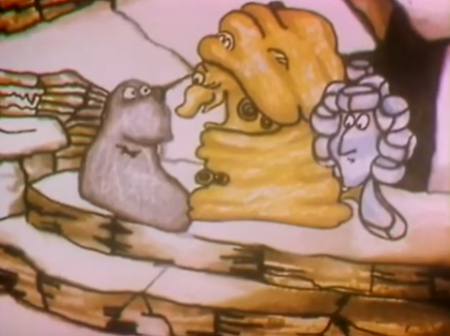
I saw Dig in the first or second grade, many years after it debuted, and I assume my teacher had taped one of its repeat airings. This is a practice alien to schoolchildren these days, when we can summon anything by streaming or downloads. In the 1980s and 1990s, however, we were still at the mercy of whatever was at hand, so teachers might go to the school library and pull out VHS tapes or film strips of much older vintage.
Resourceful educators also recorded kids’ programs off TV at home just so they’d have a stockpile of semi-instructive material and holiday entertainment for years to come. Whenever teachers put on a video for the class, we might see some recent Garfield or Charlie Brown TV special...or perhaps some older selection like Nelvana’s A Cosmic Christmas or a stop-motion rendition of Dick Whittington that I’ve never been able to identify. Comment below if you have any leads on that one.
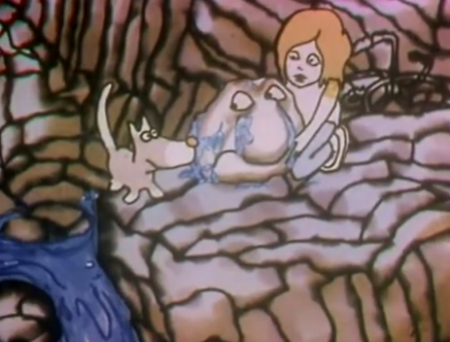
Ostensibly all about geology, Dig follows a city kid named Adam and his dog Bones as they meet a talking rock called...well, Rocco and plunge deep into the Earth. On their trek Adam learns all about earthquakes, mountains, time periods, and other geological concepts while Bones sniffs around and nibbles anything that holds still. Rocco’s family members Igneous, Sedimentary, and Metamorphic deliver songs about their specific rock types, whereafter Bones comes unstuck in time and requires rescue across millions of years.
It's all supposed to be palatable for kids, with fun songs and friendly creatures. Yet Dig is loaded with the abstract, intriguing animation choices favored often by the Hubleys—and by semi-educational 1970s cartoons in general. Characters move with halting, sketchlike mannerisms that make even a modern city look a little strange. There are slow, haunting pans across fossils and strata, accompanied by Jones’ eclectic and eerie background music. The various talking rocks are grotesque just as often as they’re cute, and there’s the constant feeling that Adam and Bones are treading into places they definitely shouldn’t be.
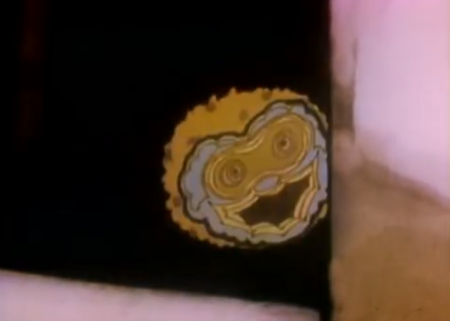
The educational aspects of Dig actually add to the effect. Instead of reciting facts and labored explanations, Rocco and his fellow stone creatures deliver lessons with a rapid, occasionally metaphorical tone that makes it easy to miss such details about geological eras and whatnot. It's just as disorienting as the animation. Then again, it's refreshing to find children’s educational cartoons that challenge their audiences to pay close attention, rewatch them, and maybe do a little extra reading about sediments and erosion.
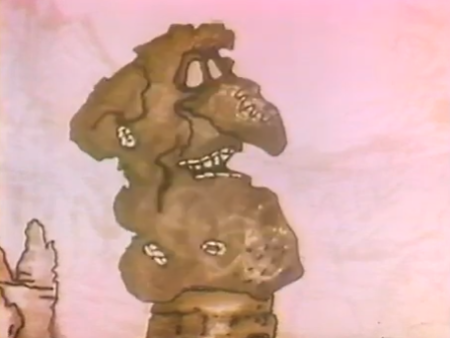
That’s why Dig stayed with me. It was much more abstract than the Disney films or TV cartoons I commonly saw, and it even surpassed something like Watership Down, which at least has realistic rabbits in between its apocalyptic imagery (and which John Hubley was originally going to direct). This made Dig strange and dreamlike to me. It didn’t feel as safe as other animated specials, not because of anything that happened in it but rather because I didn’t know the limitations of its world. There was a vague trepidation about something bizarre or frightening lying around the corner, even in this TV-appropriate lesson about stalactites.
Animation is unique in that ability to disquiet. Live-action creations can be beautifully surreal, but anything with flesh-and-blood actors carries unspoken assurances, especially to a child. We learn from an early age that these are actors and special effects, and no matter what happens during the story, the players are unharmed. Cartoons don’t carry that same protection. Their characters don’t exist in the real world, and so their peril seems strangely more real. Bambi’s mother and Optimus Prime and poor Violet (from Watership Down) didn’t shuffle off the set once their death scenes wrapped up shooting. They lived only on the screen, and they died there as well.
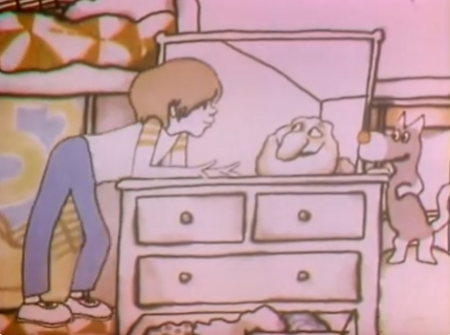
Not that Dig is even remotely harsh. Adam rescues his dog, and they emerge into the mundanity of the city with Rocco and a greater understanding of what’s in the ground below them. Of course, the experience of being around living, talking rocks might warp a kid’s perceptions to the point where they see even a broken sidewalk as the mangled corpse of a sapient being, but that’s the price of cartoon personification.
You can watch the entirely of Dig here. If you don’t care to sit through all 25 minutes, its vaguely ominous atmosphere is embodied well at the 14:30 mark, when an adorable little dog vanishes and a malformed limestone golem cackles about it.
Dig now seems quaint to me, since I’m older and cynical and much more familiar with its native era of animation. Even so, I respect Dig for unnerving me just enough that I'd remember it and track it down as an adult. Heck, maybe it’s the reason I like Wurm: Journey to the Center of the Earth so much.

No comments:
Post a Comment